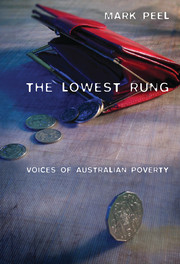Conclusion
Published online by Cambridge University Press: 22 September 2009
Summary
Dark
As I made my final trips to Broadmeadows, Inala and Mount Druitt, brave words were being spoken about their future. Words, like renovation and rehabilitation, which spoke of a conviction that these suburbs were damaged and deficient. It was a refrain strongest among strategic planners and development consultants who spoke in interviews of ‘innovative place management’, ‘selling Mount Druitt’, ‘facilitating community synergies’ or ‘forging a competitive hub’. They wanted to work on ‘image’ and change the ‘living environment’ to attract ‘high-calibre businessmen’.
The prominence of image was a telling signal of their perception of poverty. It demanded less change outside disadvantaged places and more within them. The problem wasn't inequality or injustice but the ‘over-concentration’ of poor people in particular places. Poverty could not be eradicated, only shifted from your patch into someone else's. While it was the nature of their task to start with what they had, I was surprised at how easily these strategists could explain away the harsh facts of entrenched unemployment and neglect. One told me that ‘we're going through a major evolutionary change in this country, where we simply have to recognise that we're not going to be able to provide jobs for everybody’. Honest enough, perhaps, but rather unnerving given the dozen or so unemployed young men who were standing nearby.
At least they were talking about poverty. They were moved to do something about a problem they took seriously and thought should be solved.
- Type
- Chapter
- Information
- The Lowest RungVoices of Australian Poverty, pp. 171 - 182Publisher: Cambridge University PressPrint publication year: 2003
- 1
- Cited by



